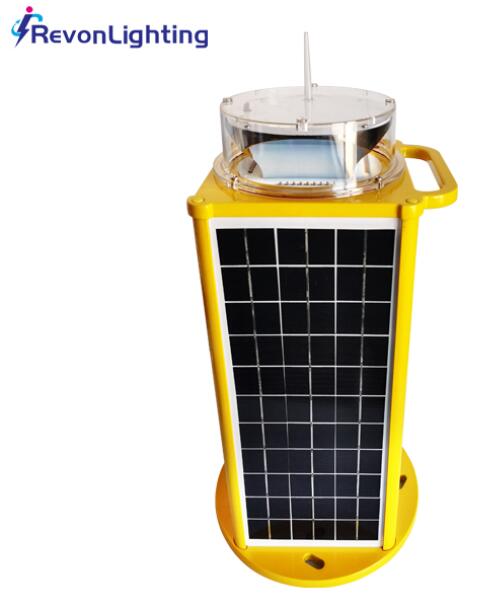In the realm of maritime navigation, the evolution of technology has always played a pivotal role in ensuring the safety and efficiency of sea travel. One of the most significant advancements in recent years is the development and widespread adoption of LED marine lantern. These modern beacons of light are revolutionizing the way vessels navigate through waterways, offering unparalleled benefits over traditional lighting systems. This article delves into the technology behind LED marine lantern, their advantages, applications, and the future they promise for maritime navigation.
The Technology Behind LED Marine Lantern
Light Emitting Diode (LED) technology has transformed lighting across various industries, and marine navigation is no exception. Unlike traditional incandescent or halogen bulbs, LEDs produce light through the movement of electrons in a semiconductor material. This process, known as electroluminescence, is highly efficient and generates minimal heat compared to conventional lighting.

LED marine lanterns are designed to meet the rigorous demands of maritime environments. They are constructed using robust materials that can withstand harsh weather conditions, saltwater corrosion, and physical impacts. The LEDs themselves are housed in waterproof enclosures, ensuring reliable performance even in extreme conditions. Furthermore, LED marine lanterns often incorporate advanced optics, such as Fresnel lenses, to enhance light distribution and intensity, making them visible over greater distances.
Advantages of LED Marine Lanterns
The transition to LED marine lanterns has brought numerous advantages, making them the preferred choice for modern maritime navigation. Here are some of the key benefits:
Energy Efficiency: LED marine lanterns consume significantly less power compared to traditional lighting systems. This efficiency translates to longer operational life on the same energy source, reducing the need for frequent maintenance and battery replacements. In many cases, solar panels are used to power LED lanterns, further enhancing their sustainability and reducing operational costs.
Longevity: LEDs have an impressive lifespan, often exceeding 50,000 hours of continuous operation. This longevity is particularly beneficial for marine applications where maintenance can be challenging and costly. The extended life of LED lanterns minimizes downtime and ensures continuous, reliable operation.
Brightness and Visibility: LED marine lanterns provide intense, focused light that is easily visible from long distances. The ability to adjust the color and flashing patterns of LEDs allows for customized signaling, enhancing the clarity of navigational aids. This improved visibility is crucial for preventing accidents and ensuring safe passage through busy or hazardous waterways.
Durability: The solid-state nature of LEDs makes them highly resistant to shock and vibration, common in marine environments. Unlike traditional bulbs, LEDs do not have fragile filaments or glass components that can break under stress. This durability ensures that LED marine lanterns remain operational even in rough sea conditions.
Environmental Impact: LED technology is environmentally friendly. LEDs do not contain hazardous materials like mercury, which is found in some traditional lighting systems. Their energy efficiency also reduces the overall carbon footprint of maritime operations, contributing to a greener, more sustainable future.
Applications of LED Marine Lanterns
LED marine lanterns are used in a wide range of maritime applications, each critical to ensuring the safety and efficiency of navigation. Some of the primary applications include:
Lighthouses: Traditional lighthouses are being upgraded with LED lanterns to improve their efficiency and visibility. These powerful lights guide ships through dangerous coastal areas, helping to prevent groundings and collisions.
Buoys and Beacons: Floating navigational aids, such as buoys and beacons, are equipped with LED lanterns to mark channels, indicate underwater hazards, and provide directional guidance. The ability to program different light patterns and colors enhances the functionality of these aids.
Offshore Platforms: Oil rigs, wind farms, and other offshore installations use LED marine lanterns to mark their presence and warn passing vessels. These lights are crucial for preventing accidents in busy offshore areas.
Harbors and Ports: LED lanterns are used to mark harbor entrances, docks, and other critical areas within ports. Their bright, clear light helps ships navigate safely through congested port areas, reducing the risk of accidents.
Search and Rescue Operations: LED technology is also used in search and rescue operations. High-intensity LED lanterns can illuminate large areas, making it easier to locate and assist vessels in distress.
| led marine lantern | led marine lanterns |
| 12 | 34 |
The Future of LED Marine Lanterns
The future of LED marine lanterns looks promising, with ongoing advancements poised to further enhance their capabilities. Innovations in LED technology, such as increased efficiency, improved optics, and smarter control systems, will continue to drive the evolution of marine lanterns. Here are some trends and developments to watch for:
Smart Lighting Systems: The integration of smart technology into LED marine lanterns will enable remote monitoring and control. This capability allows for real-time adjustments to light patterns and intensity, optimizing navigational aids based on changing conditions.
Enhanced Energy Storage: Advances in battery technology, particularly in the realm of renewable energy storage, will complement the energy efficiency of LED lanterns. Improved batteries will extend the operational life of solar-powered LED systems, reducing maintenance needs and enhancing reliability.
Environmental Adaptability: Future LED marine lanterns will likely incorporate sensors that adjust lighting based on environmental conditions. For example, they could increase brightness in foggy conditions or switch to energy-saving modes during periods of low traffic.
Sustainability Initiatives: The push for sustainability in maritime operations will drive the adoption of LED marine lanterns. Their low energy consumption and long lifespan align with global efforts to reduce environmental impact and promote greener technologies.
Conclusion
LED marine lanterns represent a significant leap forward in maritime navigation technology. Their energy efficiency, longevity, brightness, durability, and environmental benefits make them an ideal choice for modern navigational aids. As technology continues to advance, LED marine lanterns will play an increasingly vital role in ensuring the safety and efficiency of maritime travel. From guiding ships through treacherous waters to marking critical offshore installations, these beacons of light are indispensable to the maritime world, illuminating the path toward a safer and more sustainable future.